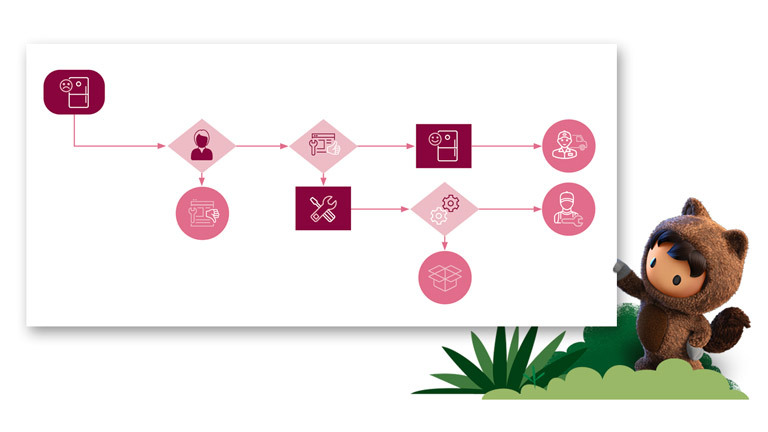Ready to automate workflows? Here’s where to start.
Learn how to prioritize which business processes are the best candidates for automation.
Organizations are embracing automation. For many, it’s become a lifeline to alleviate employees’ escalating workloads and serve customers in the way they expect. It’s also become a competitive advantage, helping forward-thinking companies gain an edge in improving both customer satisfaction and employee satisfaction.
The need is there. And now, so is the technology.
Workflow automation is no longer solely the realm of professional developers and IT. Low code is making it possible for more business users to automate repetitive, manual tasks so employees can spend more time on work that’s enjoyable and high-impact. Business teams are ready — four out of five employees who have used automation are now looking for new tasks to automate.
While business leaders are starting to take on a bigger role in automating workflows, it can be daunting to know where to start. How do you decide which workflows to automate? Here’s the thing: You don’t have to tackle everything right out of the gate or take on an entire end-to-end process all at once. You can automate a few manual steps that are causing the most headaches for your team. This article shows you how to get started in the right direction.
What every business leader needs to know to get started with workflow automation:
Establish project goals
When you’re deciding what process to automate, step one is to get clear on the goal, specifically: what you want automation to achieve and how that aligns to organizational priorities.
Is customer satisfaction (CSAT) a top priority? Improved employee retention? Growing a specific customer segment? Once you understand these big picture goals, they can guide your automation goals and help you stay focused on improvements that will have the greatest impact.
For example, if the company’s north star is increasing CSAT, consider where you can build automation to shorten time to case closure or reduce the number of handoffs needed to resolve an issue. If the focus is employee experience, look for areas where you can use automation to reduce time-consuming tasks like looking for information in another system.
Aligning your team’s success metrics with those of the business is the foundation of everything that follows. Down the road, you’ll be able to return to these metrics to measure the success of your effort.

Map the current business process
As a business leader, you bring a unique perspective. You know what your department needs and have a deep understanding of how customers and employees interact with different business processes. This puts you in the best position to determine which business processes — or steps within a process — are the best candidates for automation. Mapping the existing process will help you see all the critical connections between decision points, people, data, and systems in the workflow.
Follow the checklist below to document existing processes and analyze their performance.

Salesforce Technical Lead, EIGENSONNE
Diagram the workflow.

Determine how long the process takes.
List everyone involved in the process.
Identify the systems and data requirements involved.
Quantify inefficiencies.
Pinpoint where to eliminate friction and redundancy.
At this stage you’ll have a clear understanding of your business process and be ready to identify what’s not working and where to make improvements using automation.
Ask yourself: Where are the performance issues? Where are people creating workarounds or gaming the system? Where is excessive manual effort required? This will help you determine exactly where in the process there is friction and redundancy — and likely, where your teams and/or customers are facing roadblocks.
Processes that frustrate your teams and customers are prime candidates for automation and a great place to start. This may include processes that:
- Involve multiple teams and multiple steps
- Are repeated often across the organization
- Involve repetitive steps
- Are prone to human error
- Take up time with simple clicks
Remember: Don’t try to tackle everything all at once. Prioritize areas where automation can have the biggest impact on the employee experience and the customer experience — even if that’s a few steps within a bigger process. You can scale over time.
EVP and GM, Platform, Salesforce

Choose the right automation tools.
- Low-code tools that let you automate and scale complex processes quickly without extensive or expensive IT resources
- Decision assistance that gives people AI-powered insights, predictions, and recommendations at every step of the process
- Integration that connects data from anywhere — across multiple, potentially siloed systems
- Extensibility that lets you tailor automation to your specific business with prebuilt workflows, processes, bots, and components

of executives are using Low Code to streamline internal workflows.
Start automating your workflows.
Workflow automation sets everyone up for success — your employees, your customers, and the business. Set your goals, pick a few high-priority tasks to automate, and find the best low-code tools to help you succeed. Follow these steps and explore what’s possible.
Related Content

Report
Read the “Trends in Workflow Automation” study

Blog
95% of IT Leaders Fuel Productivity with Automation — See Why

Guide
Customer Service Workflow Automation — What You Need to Know
More Resources

Blog
Start Your customer service automation process with these 5 questions.

Webpage
Build process automation into your business.

Trail
Learn to build automations on the Salesforce Platform.


